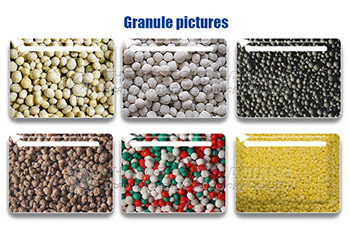1.Improving the performance of NPK fertilizer production equipment is the basis
Choose qualified production equipment, choose well-equipped, complete test means, reliable product quality manufacturers, under the guidance of experienced personnel to buy, late equipment management and maintenance personnel to have a certain professional level. Zhengzhou Huaqiang Co.Ltd are a leading agricultural equipment manufacturer in China. We has strong technical strength in fertilizer machines. All of our products comply with international quality standards and greatly appreciated in a variety of different markets throught the world.
2.Choosing ammonium phosphate with good viscosity as raw material is the premise
The pelletization of NPK fertilizer mainly depends on the viscosity of ammonium phosphate and conditioner, and the poor viscosity of ammonium phosphate directly affects the pelletization rate of compound fertilizer.Therefore, when purchasing ammonium phosphate, we should consider not only nutrient content and price, but also its viscosity.From the actual production experience, the viscosity of diammonium phosphate is better than that of monoammonium phosphate.
3.Ensuring the fineness of raw materials and feedbacks is essential
The finer the powder of the raw material, the better the viscosity of the material, the more important it is to improve the efficiency of the crusher
Chain crusher to help make the big granules into the fine powder and get back to granulator machine. It is simple and compact in structure, cover small area, easy maintenance such characters, crushing effect is good, smooth operation, easy to clean.
4.Material mixing is an important measure to improve the NPK fertilizer pelletizing rate
The material is mixed evenly, on the one hand, the mixer mixes the fresh material evenly, on the other hand, the mixer combines the returned material and the fresh material evenly.Because the fine powder in the returned material is mostly potassium and nitrogen with poor viscosity, it is the material that is least likely to form into a ball, while the fresh material has better viscosity and is easy to form into a large ball in production.Mix the two thoroughly to prevent the formation of large balls and too much powder.
5.Suitable moisture and pelletizing temperature are the key
Only when the temperature and water content of granulating materials are adjusted to the optimal point can the granulation area be ensured to be normal.
The disc granulator is suitable for the production of NPK fertilizer granules with small yield, and the rotary granulator is suitable for the mass production of NPK fertilizer. Addition of moisture during granulation requires certain experience of operators.
6.Suitable air volume and stable furnace temperature are the preconditions
The size of the air volume directly affects the drying effect, the air volume in the dryer, the drying effect is good.If the air volume is too large, it is easy to extract the powder in the simplified body, and the wind speed should be less than 2m/s. Best cooling head end temperature difference is about 100 ℃, the import and export temperature cannot frequent adjustment.When urea is used as nitrogen source, the temperature should be determined according to the amount of urea. The more urea is used, the lower the drying operation temperature will be.
.jpg)
